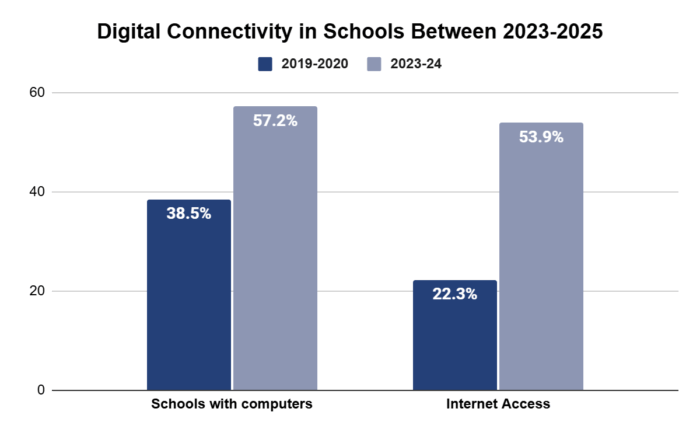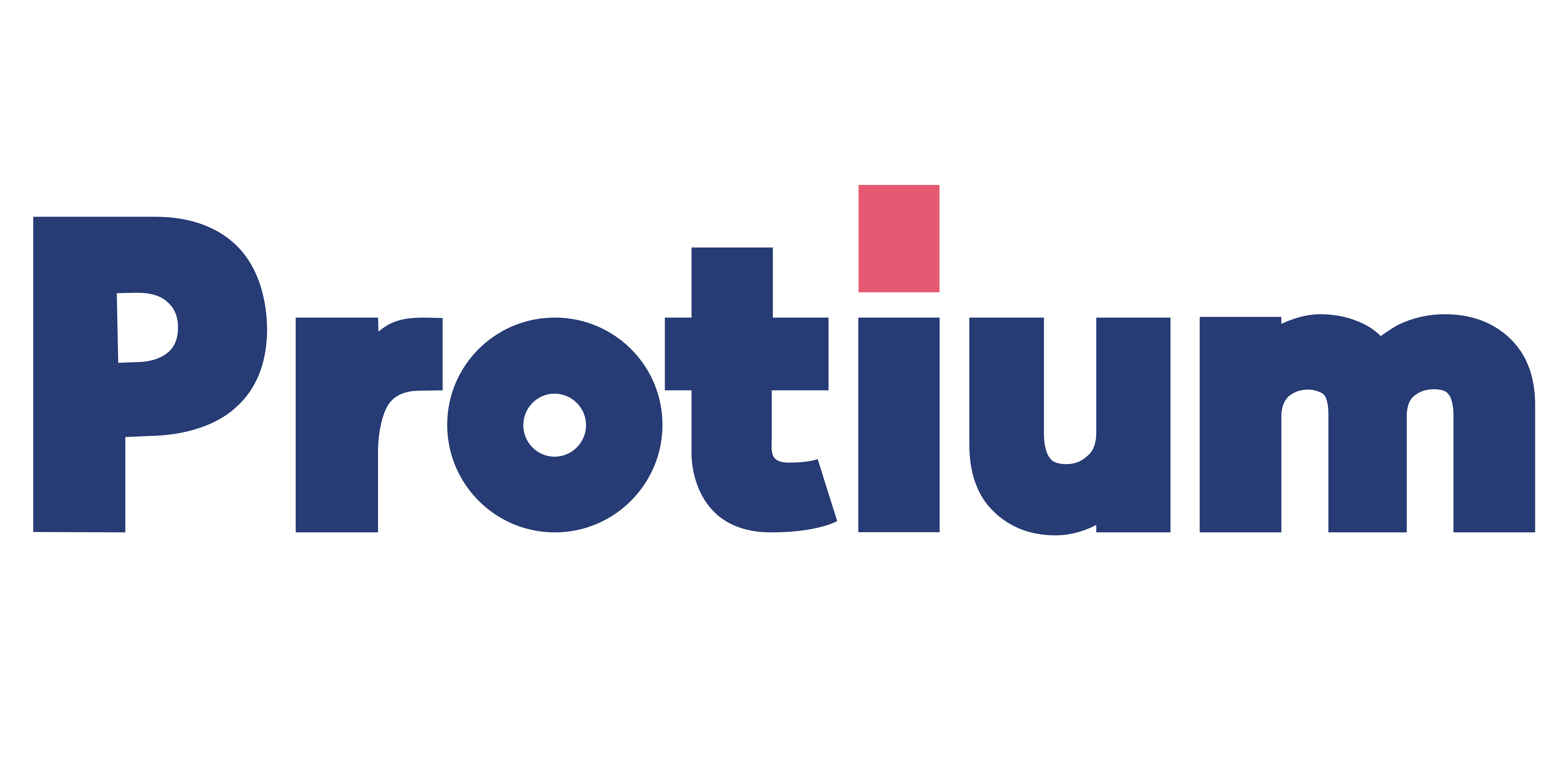- India’s education system is expanding rapidly, yet many institutions in Tier-2 and Tier-3 cities still struggle with resource gaps and limited access to quality teaching tools.
- To bridge these disparities, government programs like Samagra Shiksha and PM e-Vidya are improving access and digital readiness, but smaller schools and colleges often need additional capital to modernize facilities, adopt new technology, and enhance teaching quality.
- Through Educational Institution Loans offered by RBI-regulated NBFCs such as Protium, these institutions can fund infrastructure upgrades, smart-classroom integration, teacher training, and student-resource development.
- Educational institution loan acts as a growth enabler, helping smaller-city institutions stay competitive, attract higher enrolments, and deliver a better learning experience—building stronger, more equitable pathways for the next generation.
India’s education sector has grown rapidly, with over 24.8 crore students enrolled in 14.72 lakh schools with 98 lakh teachers. The total number of Higher Education Institutions (HEIs) grew by 13.8%, rising from 51,534 in 2014–15 to 58,643 in 2022–23.1 However, this growth has not been uniform; institutions in Tier-2 and Tier-3 cities face distinct challenges compared to those in major metropolitan areas.
Many smaller schools and colleges struggle with infrastructure, technology adoption, teacher training and maintaining quality standards, such as:
- Digital Connectivity: The percentage of schools with computers is 57.2% in 2023–24 (up from 38.5% in 2019–20), and the percentage with internet access is 53.9% (from 22.3%) during the same period. Despite the increase, a large proportion of schools still cannot fully tap into e-learning, remote classes, or digital resources2.

- EdTech Integration Costs: Installation of smart boards, digital labs, stable broadband, or interactive learning systems can be expensive. In Tier-2/Tier-3 settings, budgets are often tighter.
- Teacher Training in Technology: Even where digital tools exist, many educators in smaller cities haven’t received sufficient training to use them effectively. Without this human capacity, the technology investment yields limited gains. The lack of technology-savvy teachers reduces a school’s competitiveness compared to metro institutions.
Together, these gaps hinder smaller institutions from offering a modern learning environment and keeping pace with urban peers. Institutions that cannot upgrade infrastructure or integrate technology risk losing student enrolments or falling behind in reputation.
Human Resources & Guidance Gaps
Infrastructure alone does not guarantee quality education. The human-element remains a critical differentiator.
- Teacher Shortages: The shortage of qualified teachers remains one of the most pressing challenges in India’s education system, particularly in non-urban areas. Across the country, nearly 10 lakh teaching positions remain vacant, with the gap most severe at the primary and elementary levels3. In several states, pupil-teacher ratios have drifted well beyond 40:14 instead of the recommended 30:1, making it difficult to ensure individual attention and effective classroom management. Even where posts are filled, uneven teacher deployment and limited access to professional development continue to affect teaching quality and learning outcomes.
- Skill-Based Education: Curricula in many smaller-city institutions often remain traditional, without sufficient emphasis on employability skills, soft skills or vocational training. Students emerging from such institutions may find themselves less prepared for industry demands or higher education transitions.
- Career Counseling: Many schools outside major cities lack structured guidance and career-counselling systems. Students may complete schooling but without clarity on further studies, vocational pathways or local employment opportunities.
Unless these human-resource and guidance gaps are addressed, infrastructure investments alone will not deliver improved outcomes. Schools require competent teachers, continuous professional development, and student-support systems for holistic success.
Content & Access Gaps
Beyond physical and human resources, content quality and access opportunities remain weaker in smaller cities.
Localized, Quality Content: A shortage of high-quality digital content in regional languages or suited to local needs poses a major barrier. Many small or rural schools primarily teach in local or state languages and often do not offer English, Hindi, or international language instruction. As a result, much of the existing online material which is typically designed in English or Hindi remains inaccessible to these students. Without localized, curriculum-aligned learning resources, students in Tier-2 and Tier-3 settings face an uneven playing field in digital education.
Learning Resources: Many smaller institutions still operate without well-equipped libraries, science and computer labs or extracurricular facilities. For instance, only about 17.5 % of schools had arts or co-curricular rooms5.
Holistic Development: Sports, extra-curricular exposure, career-oriented modules, upskilling, global links or even peer competitions may not be available in smaller cities. This limits student exposure and may affect institutions’ ability to attract and retain students who seek broader opportunities.
When access is limited, the institution’s value proposition suffers. Students may seek – or be encouraged to seek – alternatives in urban centres, reducing enrolment growth and financial viability of smaller institutions. To overcome these challenges, the Government of India has introduced several initiatives to support school education, especially in underserved geographies. For instance, The Samagra Shiksha scheme covers school education from pre-school through class XII, focusing on inclusive access and quality. The PM e‑Vidya initiative focuses on digital and multi-mode access to education across regions.
While these are important, many institutions—especially in Tier-2 and Tier-3 cities—still face funding and capacity constraints that government programmes alone cannot fully address.
Educational Institution Loans as Strategic Investments
For small and mid-sized educational institutions in smaller cities, tailored financing solutions can play a transformational role. Educational Institution loan by RBI-regulated NBFC, Protium, provides funds for growth and upgrading and can enable institutions to invest in infrastructure, technology, human capital and student resources. Such loans can turn into growth enablers:
- Infrastructure Upgrade: Loans can fund building additional classrooms, science labs, libraries or refurbishing existing facilities—helping institutions provide a credible modern campus environment.
- Technology Adoption: Institutions can install smart classrooms, e-learning systems, digital labs and secure broadband connectivity, bridging the digital divide with urban peers. A notable example is Mathakondapalli Model School in Tamil Nadu, who with Protium’s support, established a Virtual Reality, Robotics and Language Labs. These state-of-the-art facilities not only transformed digital learning but also inspired students to build a fully functional car through the Automobile Lab—a shining illustration of how access to technology can spark innovation at the grassroots level.
- Teacher Development: Institutions can partner with EdTech firms, run workshops, purchase training subscriptions, and develop teaching competency—thereby raising learning quality.
- Student Resources: Loans can support extra-curricular amenities, career-counselling centres, vocational modules, and even tie-ups with local industries for exposure—enhancing the institution’s attractiveness and relevance.
For smaller institutions, such financing positions them to remain competitive, attract more students, improve outcomes, and deliver value in ways that distinguish them from under-resourced peers.
Why Educational Institution Loans Matter for Tier-2 & Tier-3 Regions
In accessible Tier-2 and Tier-3 city contexts, institutions often serve local and regional demand—and can become centers of educational opportunity. But to unlock that potential they must address the gaps discussed above. Here are key reasons why loans matter here:
- Local demand: Many families prefer education close to home rather than migrating to metros. Institutions that upgrade their offerings can capture this demand.
- Cost-effectiveness: Borrowing to upgrade may yield higher returns in enrolments, reputation and outcomes than waiting for incremental growth.
- Strengthening ecosystem: As the smaller-city institution improves, it also raises the local education ecosystem: better trained teachers, better facilities, improved local reputation, and spill-over benefits for the region.
- Competitive differentiation: Urban institutions are increasingly accessible to smaller cities through online learning and branch campuses. To compete, small city institutions must raise their level and stay relevant. Loans are a tool to do that proactively.
- Sustainable growth: Using a structured loan for a clear investment plan—rather than ad hoc subsidy-style upgrades—enables institutions to plan, monitor returns (in enrolments, fees, outcomes) and scale responsibly.
In short, when targeted well, institutional loans act as catalysts rather than burdens—and they align with the institution’s mission to provide quality education in smaller-city markets.
Practical Recommendations for Educational Institutions
For institution owners in Tier-2 and Tier-3 cities evaluating loans, the following steps provide guidance:
- Conduct a gap-analysis: List infrastructure, technology, teacher-training and student-resource gaps. Prioritize areas with highest impact on enrolments and outcomes.
- Build a clear investment plan: Specify what the loan will fund. For example, a digital lab, smart-board classrooms, library expansion or teacher certification programme, along with timelines and expected results.
- Consider loan terms that match cash-flows: Ensure repayment schedules align with fee collections or revenue growth—not overly aggressive amortisation that burdens the institution.
- Link loan to outcome tracking: Set key performance indicators such as enrolment growth, student-teacher ratio improvement, digital utilisation rates—all help monitor impact and justify financing.
- Leverage government scheme integration: Use institutional loans in conjunction with existing government programmes (such as Samagra Shiksha or PM e-Vidya) to avoid duplication and maximise value.
- Communicate improvement to stakeholders: Parents, local community and students value visible upgrades. Marketing the new lab, digital classroom or teacher-training initiative can enhance reputation and drive enrolments.
- Plan for sustainability: Beyond the initial upgrade, plan how to maintain and upgrade technology, train new teachers, refresh library contents, and budget for ongoing costs—ensure the loan investment doesn’t become a one-time spike.
By using this structured approach, small-city educational institutions can harness financing effectively and position themselves for growth and quality improvement.

